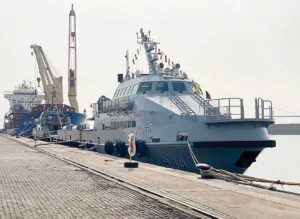Former MASLOC CEO Sedinam Tamakloe received a 10-year prison sentence with hard labor, while former COO Daniel Axim received a five-year sentence with hard labor.
On 78 counts, including conspiring to steal, causing financial loss to the state, money laundering, and causing damage to public property in violation of public procurement law, they were both found guilty.
Since 2019, the two have been put on trial. Sedina Tamakloe, the first accused, was tried in absentia after she fled the country with permission from the court to seek medical attention abroad. The state called a total of six witnesses. On the other hand, the second accused party gave a direct testimony without calling any witnesses.
The offenses for which the defendants have been found guilty center on the embezzlement of funds intended for MASLOc operations from 2013 to 2016.
In one of the cases, it was discovered that the prisoners had taken out a GHc 500,000 loan for the Obaatampa Savings and Loans company. However, when the financial institution declined to give them a twenty-four percent commission on the deal, the prisoners demanded a refund of the money.
The state’s evidence revealed that, despite the existence of proof of the aforementioned refund to the prisoners, it was not recorded in the books and accounts of the organization that filed the complaint, MASLOc.
Additionally, the pair was found guilty of stealing more than 1.7 million Ghanaian cedis intended for a sensitization campaign. The case’s facts state that MASLOc was supposed to give each of the 85,300 beneficiaries, or 1.7 million cedis, 20 Ghana cedis. Only 1,300 cedis, however, were used for the intended purpose; the remaining funds were embezzled by the prisoners.
Similarly, of the 1.4 million cedis, only 579,800 were given to the victims of the Kantamanso fire, with the remaining monies going to the two defendants.
Similar circumstances included the purchase of some Samsung phones and some vehicles for MASLOc, where the funds disbursed for the purchase were greater than the market value of the vehicles at the time.
Despite being purchased in bulk, the evidence indicated that the amounts were greater than the going rate at the time.







